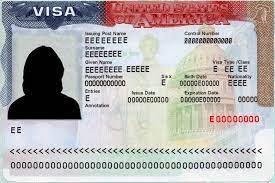A visa serves as your key to international travel, allowing entry into a foreign country for a specified duration. Typically, visas are obtained before travel through embassies, consulates, or online applications. They can also be acquired upon arrival in some instances. These stamped or affixed permits outline the permissible duration of stay and are an essential tool for security and immigration control.
Visual Appearance of Visas:

A visa, generally a sticker on your passport, features personal details such as your name, picture, and the duration of your permitted stay. Some visas, like electronic ones, are issued as separate documents, necessitating a printout.
Historical Evolution of Visas:
The concept of visas traces back centuries, originating from ancient travel documents and evolving into modern passport stamps. From the early mentions in biblical texts to the creation of the first passport by King Henry V, travel documents have evolved significantly to become essential for international travel and migration control post-World War eras.
Varieties of Visa Types Based on Purpose:
Visa types cater to various purposes, each designed to facilitate specific travel needs. These include tourist, transit, medical, working holiday, student, work, family reunification, investment, official, refugee/asylum, digital nomad, retirement, pilgrimage visas, and more. Each serves distinct travel intentions, whether for leisure, work, education, diplomatic missions, seeking refuge, religious pilgrimages, or retirement.
Visa-Free Travel:
Certain countries establish visa waiver agreements, allowing citizens of select countries to enter without a visa for short visits. This visa-free access often applies to citizens from Western nations like the U.S., Australia, Canada, and EU states. However, the duration of visa-free stays is typically limited, ranging from days to a few months.
Methods to Secure a Travel Visa:
Applying for a travel visa can be accomplished through various channels, including:
- Embassy or Consulate: Visiting the embassy or consulate of the destination country.
- Online (Electronic Visa): Utilizing official websites to complete an online visa application.
- Visa on Arrival: Apply for a visa upon arrival at the country’s entry point, if available.
It’s essential to understand the application methods specific to your nationality and the destination country, ensuring compliance with visa requirements.
Online visa application:
Electronic visas (e-visas) are printable documents obtained through official online application portals. Applicants typically:
- Complete an online visa application form.
- Submit electronic copies of the required documents.
- Pay the stipulated visa fee.
The decision on e-visas can take from a few minutes to several days.
Visa on Arrival:
Some countries offer visas on arrival (VOA) at entry points like airports. For a VOA:
- Applicants must apply, pay the fee, and await the decision at the point of entry.
- However, not all countries offer VOAs, and eligibility might be limited to certain nationalities or specific entry points.
Common Reasons for Visa Denial:
Visa applications might be denied due to factors such as:
- Passport validity and required blank pages.
- Vaccination requirements.
- Criminal record.
- Travel ban.
- Inadequate health insurance coverage.
Understanding these reasons is crucial to preparing a thorough and compliant visa application.
Visa duration and validity:
Visas come in various durations and validities, including:
- Short-stay and long-stay visas.
- Single-entry and multiple-entry visas, determining the number of permitted entries.
Each visa type serves different purposes, such as tourism, business, medical visits, or long-term stays.
Differentiating Between Passport and Visa:
While both are travel documents, passports and visas differ in:
- Issuance: Passports are issued by your home country, while visas are issued by the destination country.
- Purpose: Passports serve as identification, while visas indicate permission to enter a specific country.
Passports generally have longer validity (about ten years) compared to the shorter duration of visas (typically a few months).
Visa vs. Residence Permit:
A visa is for short-term travel, whereas a residence permit is for extended stays in a foreign country. Sometimes, a visa is a precursor to acquiring a residence permit.
Electronic Travel Authorizations (ETAs):
ETAs are entry permissions for nationals not requiring visas. Examples include eTAs for Canada, Australia, the U.S. ESTA, and the upcoming EU ETIAS. ETAs allow longer-term access and are easily obtained online for a nominal fee.
Joint visa schemes:
Some regional organizations offer common visas, enabling travel across multiple member states. Notable examples include the Schengen Visa, the Central American Single Visa, and agreements within the GCC, Pacific Alliance, KAZA Univisa, and others.
Exit Visas:
Exit visas, permitting departure from a specific country, are now rarely enforced and considered outdated in most countries. However, a few nations, including Belarus, Iraq, Kuwait, and Russia, still implement exit visa requirements.
Understanding the intricacies of visa acquisition, joint schemes, and exit visas facilitates smoother international travel, ensuring compliance with diverse visa regulations worldwide.
In conclusion, visas stand as essential permits for international travel, defining entry permissions, duration of stays, and travel purposes. Their historical evolution from ancient travel documents to modern passport stamps reflects their critical role in migration control and security.

